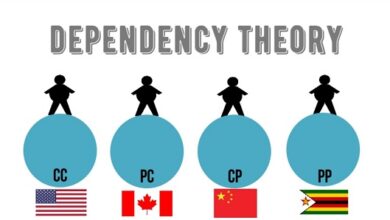Decision making definition stages and parts of the brain involved
Decision making
What do I want to study? What I want to do? Am I getting married or not? I want to have kids? Each of these questions has something in common: giving an answer involves making decisions about some kind of situation or aspect of our lives. In our day to day life, we have to constantly choose, decide and make decisions. In this article we will provide you the definition of Decision making.
And, although it may be something relatively automated in many cases, the truth is that making a decision or determination is a very complex process, as it requires a lot of effort and sub-processes, both at the functional level and at the anatomical-cerebral level. In addition, there are many factors that can influence the choice and different motivations that can change the final decision.
Throughout this article , we will talk about what decision making is , the different factors that can affect it, and the main steps involved in choosing.
Decision making: a fundamental element in our life
While we all constantly make choices and determine the course of action to follow through our own decisions, the truth is that it is not so common to stop to think about what we should have this ability, where it comes from or even what we are talking about.
We attribute the name decision-making to the set of processes through which a subject decides to determine one of the multiple possible options from which they are presented, based on a large number of factors surrounding the individual’s personal situation. subject and the situation or element in relation to which one must choose.
In other words, it is the set of mental activities that we carry out to give an answer in a context in which we have to choose between several alternatives.
It is one of the so-called executive functions , which are conceptualized as the set of cognitive skills and abilities through which we can solve situations that we are not used to, are new and for which we are not. a previously established strategy or plan of action.
This allows us to adapt to the environment and survive, making us able to work with the set of information and internal and external stimuli that are available, so that we can regulate our activity to achieve our goals.
Generally, this process is carried out to solve some kind of problem . It is a process that can be both conscious (especially if the problem in question is relevant to us) and semi-conscious in cases where the decision to be taken is automated.
It is important to keep in mind that, like the rest of the executive functions, decision making is not a process that separates from other mental processes in a sealed way, but depends on the existence of other mental processes that allow us to capture, synthesize and work with The informations.
Among many other related functions, choosing means keeping the available options in mind , being able to pay attention to each of them and calculating based on previous experience and knowledge of the possible outcomes of different options. It also implies the ability to perceive environmental stimuli and feelings, thoughts and beliefs, as well as the willingness and motivation to plan and execute an action.
Brain areas involved
The decision-making process, like the rest of the executive functions, depends mainly on our frontal lobe and its connections with the rest of the brain .
It is in this part of the neocortex, especially its ventromedial part, that the mental operations necessary for making choices, making predictions, and evaluating the costs or benefits of taking one option or another are processed and executed.
However, the decision-making process also relies on structures such as the insula, amygdala, and basal ganglia, as well as the dorsolateral prefrontal.
Influence factors
In making decisions, as we said before, a large number of factors of various kinds are involved. Among these factors, the subject’s motivation to solve the problem or make a choice that has a desirable result stands out , that is, the fact of making a decision or not doing so is relevant to us or generates some kind of pleasant consequence or unpleasant.
Self-esteem, feelings of self-efficacy and locus of control are also key aspects in decision-making: we will make decisions more easily if we believe that our actions will have an impact or influence the outcome of the situation, and they can be carried out with more confidence if we believe that we are capable of making decisions and carrying out the actions that derive from that decision.
Another aspect to be valued is the expectations we have in relation to reality or the possible consequences of our choices. In addition, calculating the benefits and costs of each election can change the type of determination we make . In the same way, it is also necessary to evaluate the effect that the non-choice of the other alternatives has: the choice of one implies that the rest and its possible repercussions will not occur.
Furthermore, at the cognitive level, the existence of possible biases must be taken into account, such as the tendency to interpret reality based on what the subject believes beforehand, without considering other views, the belief that other more specialized people will always have the reason, the tendency to modify decisions based on what is expressed by the group or in the presence of divergences between what is best believed and what ends up being done. All of this can alter decision-making.
Emotions can also play an important role . In this sense, we must also take into account the evaluation made of the different possible results of our actions. And not only the emotions that raise the possible options need to be valued, but the subject’s emotional state at the time of making the decision: a sad or depressed person will make different choices than he would make being happy and happy.
Another emotion that can cause problems is fear: it can generate a more hasty response or even the impossibility or difficulty of making decisions, in addition to affecting stress or anxiety.
Some psychopathologies and even some illnesses or medical injuries can also alter the reasoning and decision-making capacity, generally making it difficult (either because there is slowness or acceleration of the process, or because problems occur when generating alternatives).
On a more environmental level, it should be noted that there can also be a large influence on the part of the environment . The learnings we carry out throughout life, the beliefs and idiosyncrasies of our culture, the parental models we had or the type of social network in which we move can facilitate, hinder or moderate decision-making in relation to a type of concrete action .
Decision making stages
Making a decision is not immediate, but involves a set of mental steps or actions before the final election .
First of all, to make a decision, we need to be clear about what situation leads us to make that decision. That is, it is first necessary to produce and recognize as a situation or event that leads us to consider different options when performing an action. In other words, the problem must be noticed.
Once in this situation or in anticipation, the next step is to define it and determine which aspects are relevant to generate alternatives that can respond to the situation, in addition to identifying the extent to which they do so.
After that, and based on these criteria, we will proceed as far as possible to develop the maximum number of possible solutions or possible alternatives for action. Only alternatives are generated at the moment, although we usually also discard the weirdest and most unfeasible ones as we go.
Of all these options, our mind leads us to value those that seem most appropriate and viable, trying to predict their usefulness and functionality and what the possible results of the different options would be. Risks and benefits are calculated.
After that, we choose one, which will be evaluated in more depth before being carried out. Subsequently, the decision itself is taken, something that can lead to its implementation in reality (and a subsequent evaluation of the results and the comparison between what was achieved and what was expected).




